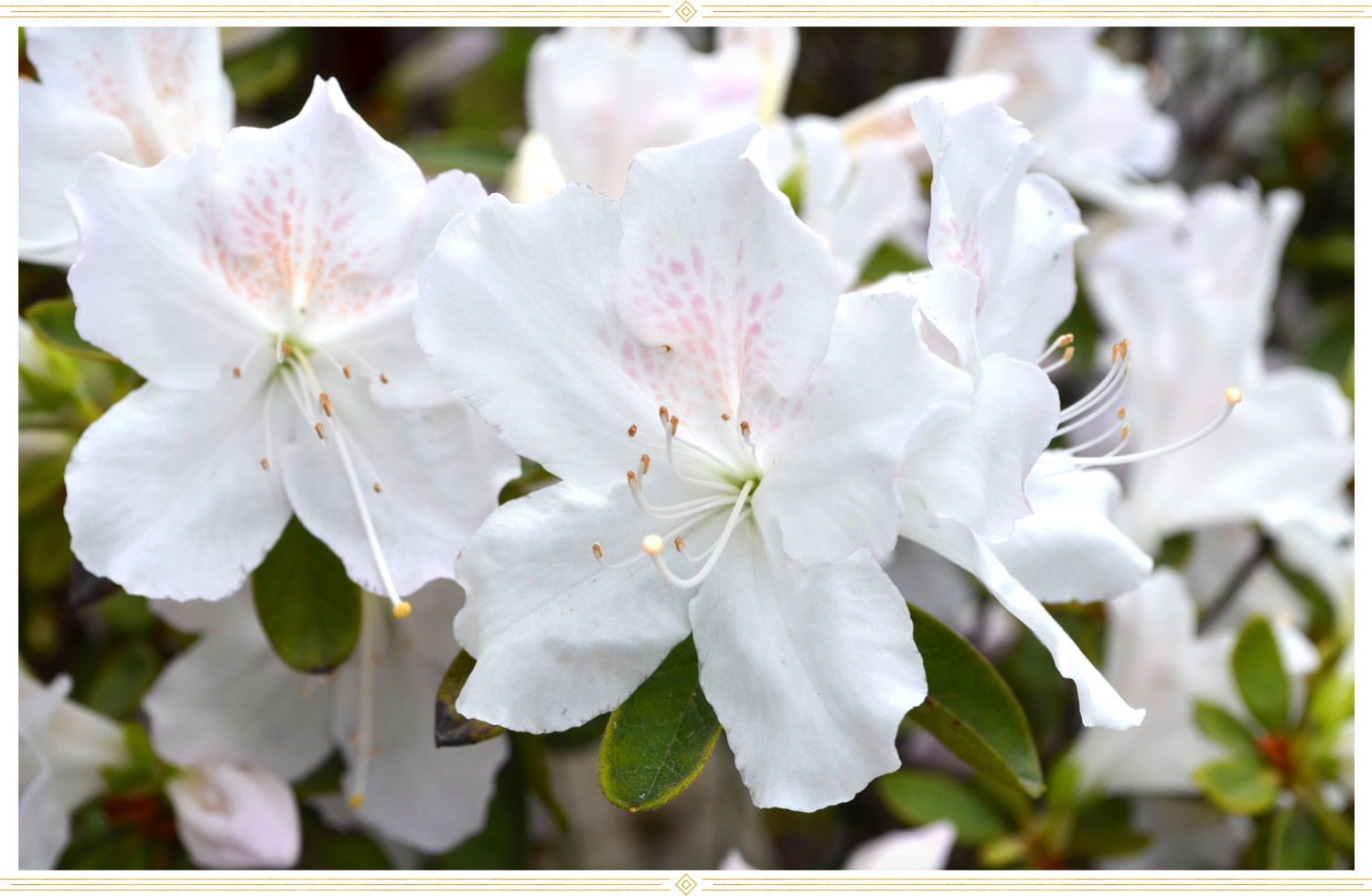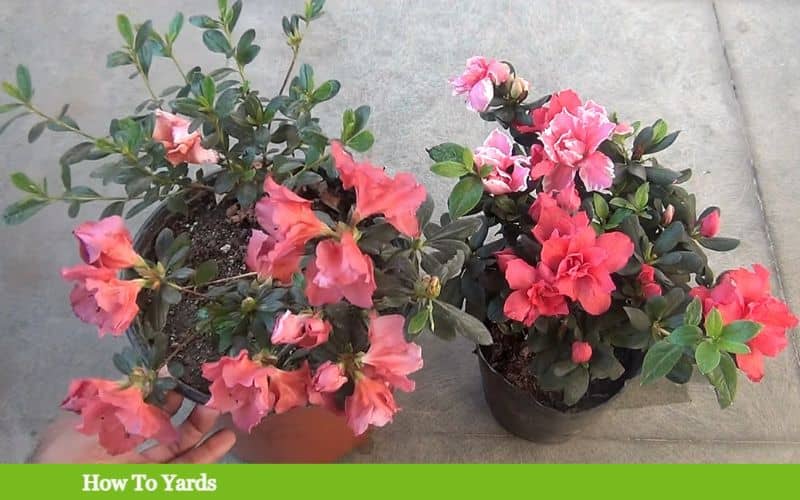Why Azaleas Shed Their Leaves: Exploring the Reasons
Azaleas, like many other deciduous plants, naturally shed their leaves as part of their growth cycle. This process, known as abscission, is a normal response to changes in the environment, such as seasonal fluctuations in temperature and daylight hours. As the days shorten and temperatures cool in the fall, azaleas prepare for the winter months by slowing down their growth and conserving energy. This is when they typically lose their leaves, a process that can be triggered by a combination of factors, including cooler temperatures, reduced daylight, and soil moisture.
Soil conditions also play a crucial role in azalea leaf drop. Azaleas prefer well-draining acidic soil, typically with a pH between 5.5 and 6.5. If the soil is too alkaline or waterlogged, it can cause stress to the plant, leading to premature leaf loss. Additionally, azaleas are sensitive to extreme temperatures, and sudden changes can cause them to drop their leaves. For example, a sudden frost or heatwave can shock the plant, causing it to shed its leaves as a defense mechanism.
It’s essential to note that azaleas typically regrow their leaves in the spring, as the weather warms up and daylight hours increase. This process is a natural part of the plant’s life cycle, and with proper care, azaleas can thrive and maintain their beautiful foliage. However, if you’re concerned about your azalea losing its leaves, it’s crucial to understand the difference between normal leaf drop and abnormal leaf loss, which can be caused by pests, diseases, or environmental stressors.
Do azaleas lose their leaves? Yes, they do, but it’s a natural process that’s essential for their growth and survival. By understanding the reasons behind azalea leaf drop, you can take steps to create a favorable environment for your plant, ensuring it remains healthy and thriving throughout the year.
How to Identify Normal vs. Abnormal Leaf Loss in Azaleas
While azaleas naturally shed their leaves in the fall, excessive or persistent leaf loss can be a sign of an underlying issue. To determine whether your azalea’s leaf loss is normal or abnormal, it’s essential to monitor the plant’s health and look for signs of stress or disease.
Normal leaf drop in azaleas typically occurs in the fall, with leaves turning yellow or orange before falling off. However, if your azalea is losing its leaves in the spring or summer, or if the leaves are turning brown or black, it may be a sign of a problem. Abnormal leaf loss can be caused by a range of factors, including pests, diseases, and environmental stressors.
Common azalea pests that can cause excessive leaf loss include aphids, whiteflies, and spider mites. These pests can suck the sap from the leaves, causing them to turn yellow or drop off. To control pest infestations, use insecticidal soap or neem oil, and ensure good air circulation around the plant.
Diseases such as root rot, leaf spot, and powdery mildew can also cause azalea leaf loss. Root rot is often caused by overwatering, while leaf spot and powdery mildew are fungal diseases that thrive in humid environments. To prevent disease, ensure good air circulation, water carefully, and treat fungal infections with fungicides.
Environmental stressors, such as extreme temperatures, drought, and exposure to wind, can also cause azalea leaf loss. To protect your azalea from extreme weather conditions, provide supplemental watering during droughts, mulch around the base of the plant, and bring plants under cover during frosts or heatwaves.
Do azaleas lose their leaves? Yes, they do, but it’s essential to distinguish between normal and abnormal leaf loss. By monitoring your azalea’s health and looking for signs of stress or disease, you can take action to prevent excessive leaf loss and keep your plant thriving.
When inspecting your azalea, look for signs of pests, diseases, or environmental stressors. Check the leaves for yellowing, browning, or blackening, and inspect the stems for signs of damage or disease. If you’re unsure about the cause of your azalea’s leaf loss, consult with a gardening expert or take a sample of the affected leaves to a nursery or gardening store for diagnosis.
Azalea Care 101: Tips for Promoting Healthy Leaf Growth
To promote healthy leaf growth and prevent azalea leaf loss, it’s essential to provide your plant with the right care. Azaleas require well-draining acidic soil, typically with a pH between 5.5 and 6.5. If your soil is too alkaline, consider adding elemental sulfur or peat moss to lower the pH.
Proper watering is also crucial for azalea health. Water your azalea regularly, but avoid overwatering, which can lead to root rot and leaf loss. Check the soil moisture by inserting your finger into the soil up to the first knuckle. If the soil feels dry, it’s time to water.
Fertilization is also important for azalea health. Use a balanced, water-soluble fertilizer (20-20-20) in the spring and summer months. Avoid fertilizing in the fall, as this can promote new growth that may not have time to harden off before winter.
Pruning is another essential aspect of azalea care. Prune your azalea immediately after it finishes blooming, removing any dead or damaged branches. This will help promote healthy growth and prevent leaf loss.
Mulching is also beneficial for azaleas, as it helps retain moisture, suppress weeds, and regulate soil temperature. Use a 2-3 inch layer of organic mulch, such as pine straw or bark chips, around the base of the plant.
Partial shade is also important for azalea health. While azaleas can tolerate full sun, they prefer partial shade, especially in warmer climates. If possible, provide your azalea with morning sun and afternoon shade.
By following these tips, you can promote healthy leaf growth and prevent azalea leaf loss. Remember, do azaleas lose their leaves? Yes, they do, but with proper care, you can minimize leaf loss and keep your azalea thriving.
Additionally, consider repotting your azalea every 2-3 years to refresh the soil and provide a larger pot if necessary. This will give the roots more room to grow and help prevent leaf loss.
By providing your azalea with the right care, you can enjoy its beautiful blooms and lush foliage for years to come. With proper care, azaleas can thrive and remain healthy, reducing the risk of leaf loss and other problems.
Common Mistakes That Can Cause Azaleas to Lose Their Leaves
While azaleas are relatively low-maintenance plants, there are several common mistakes that can cause them to lose their leaves. One of the most common mistakes is overwatering, which can lead to root rot and leaf loss. Azaleas prefer well-draining soil, so make sure to check the soil moisture before watering.
Underwatering is another common mistake that can cause azalea leaf loss. Azaleas need consistent moisture, especially during the growing season. If the soil is too dry for too long, the leaves may turn yellow and drop off.
Exposure to extreme temperatures is also a common mistake that can cause azalea leaf loss. Azaleas prefer temperatures between 60-70°F (15-21°C), so avoid placing them near heating or cooling vents, fireplaces, or drafty windows.
Another mistake that can cause azalea leaf loss is fertilizing too much or too little. Azaleas require a balanced fertilizer, but overfertilizing can cause more harm than good. Follow the instructions on the fertilizer package and avoid fertilizing during the fall or winter months.
Pruning at the wrong time is also a common mistake that can cause azalea leaf loss. Prune your azalea immediately after it finishes blooming, as pruning too early or too late can cause stress to the plant and lead to leaf loss.
Finally, failing to provide azaleas with enough humidity can also cause leaf loss. Azaleas prefer a humid environment, typically between 50-60% relative humidity. To increase the humidity around your azalea, you can place the pot on a tray filled with water and pebbles or use a humidifier.
By avoiding these common mistakes, you can help prevent azalea leaf loss and keep your plant healthy and thriving. Remember, do azaleas lose their leaves? Yes, they do, but with proper care and attention, you can minimize leaf loss and enjoy your azalea’s beautiful blooms and foliage.
It’s also important to note that azaleas are sensitive to certain chemicals and pollutants, such as pesticides and heavy metals. Avoid using these substances near your azalea, as they can cause stress to the plant and lead to leaf loss.
By following these tips and avoiding common mistakes, you can help keep your azalea healthy and thriving. With proper care and attention, your azalea can provide beautiful blooms and foliage for years to come.
How to Protect Your Azaleas from Extreme Weather Conditions
Extreme weather conditions, such as frost, heatwaves, and drought, can cause significant stress to azaleas, leading to leaf loss and other problems. To protect your azaleas from these conditions, it’s essential to take proactive steps.
Frost protection is crucial for azaleas, as they are sensitive to cold temperatures. If you live in an area prone to frosts, bring your azaleas under cover or use a frost blanket to protect them. You can also use anti-desiccant sprays to help protect the leaves from wind and cold damage.
Heatwaves can also cause stress to azaleas, especially if they are exposed to direct sunlight. To protect your azaleas from heatwaves, provide them with partial shade, especially during the hottest part of the day. You can also use mulch to help retain moisture in the soil and reduce soil temperature.
Drought is another extreme weather condition that can cause stress to azaleas. To protect your azaleas from drought, water them regularly, but avoid overwatering. You can also use drought-tolerant mulch, such as pine straw or bark chips, to help retain moisture in the soil.
Supplemental watering is also essential during periods of drought. Water your azaleas deeply once or twice a week, depending on the weather conditions. Avoid getting water on the leaves or crown of the plant, as this can cause rot and other problems.
Mulch is also an effective way to protect your azaleas from extreme weather conditions. Use a 2-3 inch layer of organic mulch, such as pine straw or bark chips, around the base of the plant. This will help retain moisture in the soil, reduce soil temperature, and prevent weeds from growing.
By taking these steps, you can help protect your azaleas from extreme weather conditions and prevent leaf loss. Remember, do azaleas lose their leaves? Yes, they do, but with proper care and protection, you can minimize leaf loss and keep your azaleas thriving.
It’s also important to note that azaleas are sensitive to wind, so if you live in a windy area, provide your azaleas with wind protection, such as a windbreak or a row of trees. This will help reduce stress to the plant and prevent leaf loss.
By following these tips, you can help keep your azaleas healthy and thriving, even in extreme weather conditions. With proper care and protection, your azaleas can provide beautiful blooms and foliage for years to come.
Azalea Leaf Loss: When to Worry and What to Do
Azalea leaf loss can be a concerning issue for gardeners, especially if it’s excessive or persistent. While some leaf drop is normal, especially during the fall season, it’s essential to monitor your azalea’s health and take action if the problem persists.
So, when should you worry about azalea leaf loss? If your azalea is losing its leaves rapidly, or if the leaves are turning yellow or brown, it’s time to take action. Check the plant for signs of pests, diseases, or environmental stressors, and take steps to address the issue.
If you suspect that pests are the cause of the leaf loss, inspect the plant carefully and treat it with insecticidal soap or neem oil. If the problem persists, consider consulting with a gardening expert or taking a sample of the affected leaves to a nursery or gardening store for diagnosis.
If you suspect that diseases are the cause of the leaf loss, treat the plant with a fungicide and ensure good air circulation around the plant. Remove any infected leaves or stems to prevent the disease from spreading.
If you suspect that environmental stressors are the cause of the leaf loss, take steps to address the issue. If the plant is exposed to extreme temperatures, provide protection from the sun or wind. If the plant is underwatered or overwatered, adjust your watering schedule accordingly.
It’s also essential to monitor your azalea’s health regularly, especially during periods of stress or extreme weather conditions. Check the plant for signs of pests, diseases, or environmental stressors, and take action if necessary.
Remember, do azaleas lose their leaves? Yes, they do, but with proper care and attention, you can minimize leaf loss and keep your azalea thriving. By monitoring your azalea’s health and taking action if necessary, you can prevent excessive leaf loss and ensure your plant remains healthy and vibrant.
In addition to monitoring your azalea’s health, it’s also essential to provide regular maintenance, such as pruning and fertilizing. Prune your azalea regularly to promote healthy growth and prevent leaf loss. Fertilize your azalea with a balanced fertilizer during the growing season to promote healthy growth and development.
By following these tips and taking action if necessary, you can help prevent azalea leaf loss and keep your plant thriving. With proper care and attention, your azalea can provide beautiful blooms and foliage for years to come.
Pruning Azaleas to Promote Healthy Growth and Prevent Leaf Loss
Pruning is an essential part of azalea care, as it helps promote healthy growth and prevent leaf loss. Pruning azaleas can be a bit tricky, but with the right techniques and tools, you can keep your azaleas looking their best.
When to Prune Azaleas
Azaleas should be pruned immediately after they finish blooming. This is usually in the late spring or early summer, depending on the variety. Pruning at this time allows you to remove any dead or damaged branches and shape the plant to maintain its desired form.
How to Prune Azaleas
Pruning azaleas requires a few basic tools, including a pair of sharp, clean pruning shears and a small saw or loppers for thicker branches. Start by removing any dead or damaged branches, cutting them off at the base. Then, shape the plant to maintain its desired form, removing any branches that are growing outside of the plant’s natural shape.
What Tools to Use
When pruning azaleas, it’s essential to use the right tools to avoid damaging the plant. A pair of sharp, clean pruning shears is the best tool for pruning azaleas, as they allow for precise cuts and minimize the risk of spreading disease. For thicker branches, use a small saw or loppers to make clean cuts.
Benefits of Pruning Azaleas
Pruning azaleas has several benefits, including promoting healthy growth, preventing leaf loss, and maintaining the plant’s desired shape. By removing dead or damaged branches, you can help prevent the spread of disease and encourage new growth. Pruning also helps to maintain the plant’s natural shape, which can become misshapen if left unpruned.
Do Azaleas Lose Their Leaves?
Yes, azaleas do lose their leaves, but with proper pruning and care, you can minimize leaf loss and keep your azaleas looking their best. By pruning azaleas regularly, you can promote healthy growth, prevent leaf loss, and maintain the plant’s desired shape.
Conclusion
Pruning azaleas is an essential part of their care, as it helps promote healthy growth and prevent leaf loss. By pruning azaleas regularly, you can keep your plants looking their best and prevent common problems like leaf loss. Remember to prune azaleas immediately after they finish blooming, using the right tools and techniques to avoid damaging the plant.
Conclusion: Keeping Your Azaleas Thriving with Proper Care
In conclusion, azalea leaf loss is a common issue that can be caused by a variety of factors, including seasonal changes, temperature fluctuations, and soil conditions. However, with proper care and attention, you can minimize leaf loss and keep your azaleas thriving.
By following the tips and advice provided in this article, you can create a favorable environment for your azaleas to grow and thrive. Remember to provide your azaleas with well-draining acidic soil, partial shade, and proper watering and fertilization. Avoid common mistakes such as over-watering, under-watering, and exposure to extreme temperatures.
Regular pruning and mulching can also help promote healthy growth and prevent leaf loss. By pruning your azaleas regularly, you can remove dead or damaged branches and shape the plant to maintain its desired form. Mulching can help retain moisture in the soil, suppress weeds, and regulate soil temperature.
Do azaleas lose their leaves? Yes, they do, but with proper care and attention, you can minimize leaf loss and keep your azaleas thriving. By monitoring your azalea’s health and taking action if leaf loss is excessive or persistent, you can prevent common problems and keep your plant looking its best.
In summary, proper care and attention are essential for preventing azalea leaf loss and promoting healthy growth. By following the tips and advice provided in this article, you can keep your azaleas thriving and enjoy their beautiful blooms and foliage for years to come.
Remember, with proper care and attention, your azaleas can provide beautiful blooms and foliage for years to come. Don’t let leaf loss get in the way of enjoying your azaleas – take action today to create a favorable environment for your plants to thrive.




:max_bytes(150000):strip_icc()/how-to-care-for-azaleas-5074145-02-a26f220553684a5f91046dcbb981e49a.jpg)




